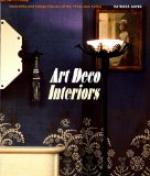Rome fell as an empire in the fifth century. In the eighth century, Venice asserted herself, later becoming the great, wealthy, Merchant City of Eastern Europe, the golden gate between Byzantium and the West (eleventh to fifteenth centuries). Her merchants visiting every country naturally carried home all art expressions, but, so far as we know, her own chief artistic output in very early days, was in the nature of richly carved wooden furniture, no specimens of which remain.
CHAPTER XVI
THE GOTHIC PERIOD
The Gothic Period is the pointed period, and dominated the art of Europe from about the tenth to the fifteenth century. Its origin was Teutonic, its development and perfection French.
At first, the house of a feudal lord meant one large hall with a raised dais, curtained off for him and his immediate family, and subdivided into sleeping apartments for the women. On this dais a table ran crossways, at which the lord and his family with their guests, ate, while a few steps lower, at a long table running lengthwise of the hall, sat the retainers. The hall was, also, the living-room for all within the walls of the castle. Sand was strewn on the stone floor and the dogs of the knights ate what was thrown to them, gnawing the bones at their leisure. This rude scene was surrounded by wonderful tapestries hung from the walls:—woman’s record of man’s deeds.
Later, we read of stairs and of another room known as the Parloir or talking-room, and here begins the sub-division of homes, which in democratic America has arrived at a point where more than 200 rooms are often sheltered under one private roof!
Oak chests figured prominently among the furnishings of a Gothic home, because the possessions of those feudal lords, who were constantly at war with one another, often had to be moved in haste. As men’s lives became more settled, their possessions gradually multiplied; but even at the end of the eleventh century bedsteads were provided only for the nobility, probably on account of expense, as they were very grand affairs, carved and draped. To that time and later belong the wonderfully carved presses or wardrobes.
Carved wood panelling was an important addition to interior decoration during the reign of Henry III (1216-72).
In the thirteenth and fourteenth centuries England with Flanders led in the production of mediaeval art.
Hallmarks of the Gothic period are animals and reptiles carved to ornament the structural parts of furniture and to ornament panels. Favourite subjects with the wood carvers of that time were scenes from the lives of the saints (the Church dominated the State) and from the romances, chanted by the minstrels.
CHAPTER XVII
THE RENAISSANCE




